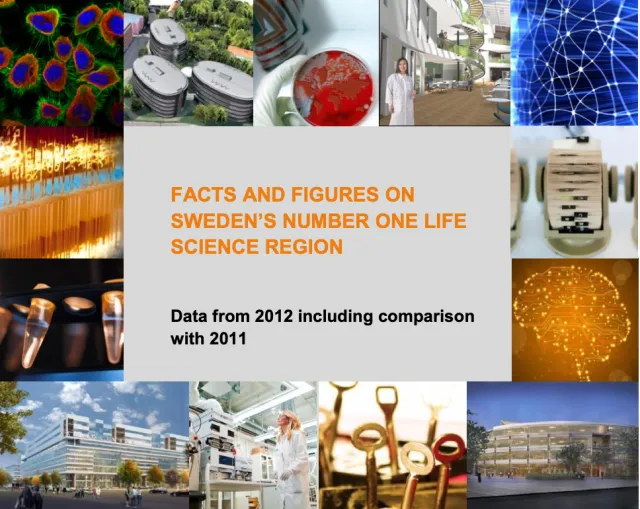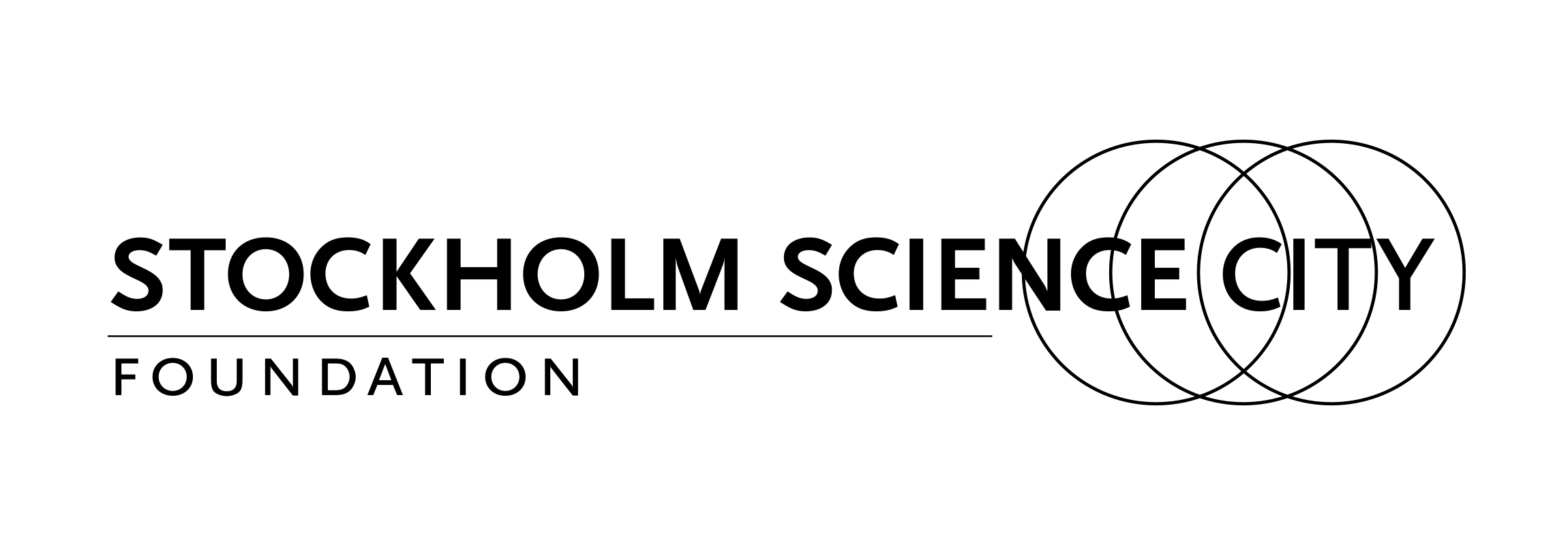Facts and figures on Sweden's number one life science region 2014

Sammanfattning
Data från 2012
Stockholm-Uppsala-regionen, definierad som de tre länen Uppsala, Stockholm och Sörmland, är ett av Europas största kluster inom life science. Enligt officiella källor om noterade aktiebolag (2012) finns det i regionen 611 företag med totalt 20 852 anställda. Av dessa arbetar cirka 13 500 personer (65 %) i företag verksamma inom forskning, utveckling och/eller produktion, medan marknadsförings- och försäljningsföretag sysselsätter 29 % av arbetskraften. Sex procent av arbetskraften är aktiva inom konsultsektorn.
Fördelningen av arbetskraften mellan olika delsektorer ser ut så här:
- Läkemedel: 10 982 personer (53 %)
- Medicinteknik: 4 971 personer (24 %)
- Biotekniska verktyg och tillbehör: 2 535 personer (12 %)
- Konsultverksamhet (CRO och andra tjänster): 1 187 personer (6 %)
- Diagnostik: 1 108 personer (5 %)
- Annan bioteknik (miljö, livsmedelsrelaterat och jordbruk): mindre än 1 %
Det finns 12 företag (2 % av företagen) med fler än 250 anställda, och dessa står tillsammans för 49 % av arbetskraften.
54 företag med 51–250 anställda (9 % av företagen) står för 28 % av arbetskraften.
144 företag med 11–50 anställda (24 % av företagen) sysselsätter 16 %.
Resterande 390 företag (65 % av företagsantalet) med 1–10 anställda står för 7 % av arbetskraften.
De tre största företagen – AstraZeneca med 3 943 anställda, GE Healthcare (1 232) och Fresenius Kabi (1 008) – står tillsammans för 30 % av regionens totala arbetskraft inom life science.
Sju av de tio största företagen har ett arv från Pharmacia (vars olika divisioner förvärvades eller slogs samman med andra företag under slutet av 1990-talet och början av 2000-talet). Detta arv återspeglas i de tre länens olika profiler – Uppsala, Stockholm och Sörmland. De mest tydliga skillnaderna mellan länen är den höga andelen anställda inom läkemedelssektorn i Stockholm (60 %, där AstraZeneca står för 25 %) och i Sörmland (91 %, nästan helt tack vare Pfizers bioläkemedelsproduktion), medan Uppsala har relativt högre andel inom sektorerna biotekniska verktyg & tillbehör samt diagnostik.
I linje med globala trender har sysselsättningen, särskilt inom läkemedelssektorn, minskat stadigt de senaste åren. Dock verkar denna nedgång nu plana ut, och det finns tecken på stabil tillväxt inom flera life science-företag, inklusive Fresenius Kabi, Oasmia Pharmaceuticals, Atlas Antibodies, Bactiguard, Cepheid och Olink.
Intressant nog visar en delpopulation av 350 företag med färre än 50 anställda under perioden 2007–2012 – som var verksamma inom FoU och produktion (marknadsförings- och försäljningsföretag exkluderades) – en stadig ökning av arbetskraften, med totalt 32 % tillväxt under femårsperioden. Trots att denna grupp bara representerar cirka 20 % av den totala arbetskraften inom FoU och produktion, visar siffrorna att det finns en växande grupp småföretag i regionen.
Dessutom pågår ambitiösa framtidsplaner med stöd från samtliga intressenter, inklusive omfattande offentliga och privata investeringar i forskningsfinansiering, forskning och fysisk infrastruktur till ett värde över 60 miljarder SEK (motsvarande cirka 9 miljarder USD). Dessa investeringar syftar till att skapa gynnsamma villkor för life science-sektorn, stödja befintliga företag och stimulera framväxten av en ny generation företag – och därigenom säkerställa att regionen fortsatt är ett världsledande life science-kluster.



